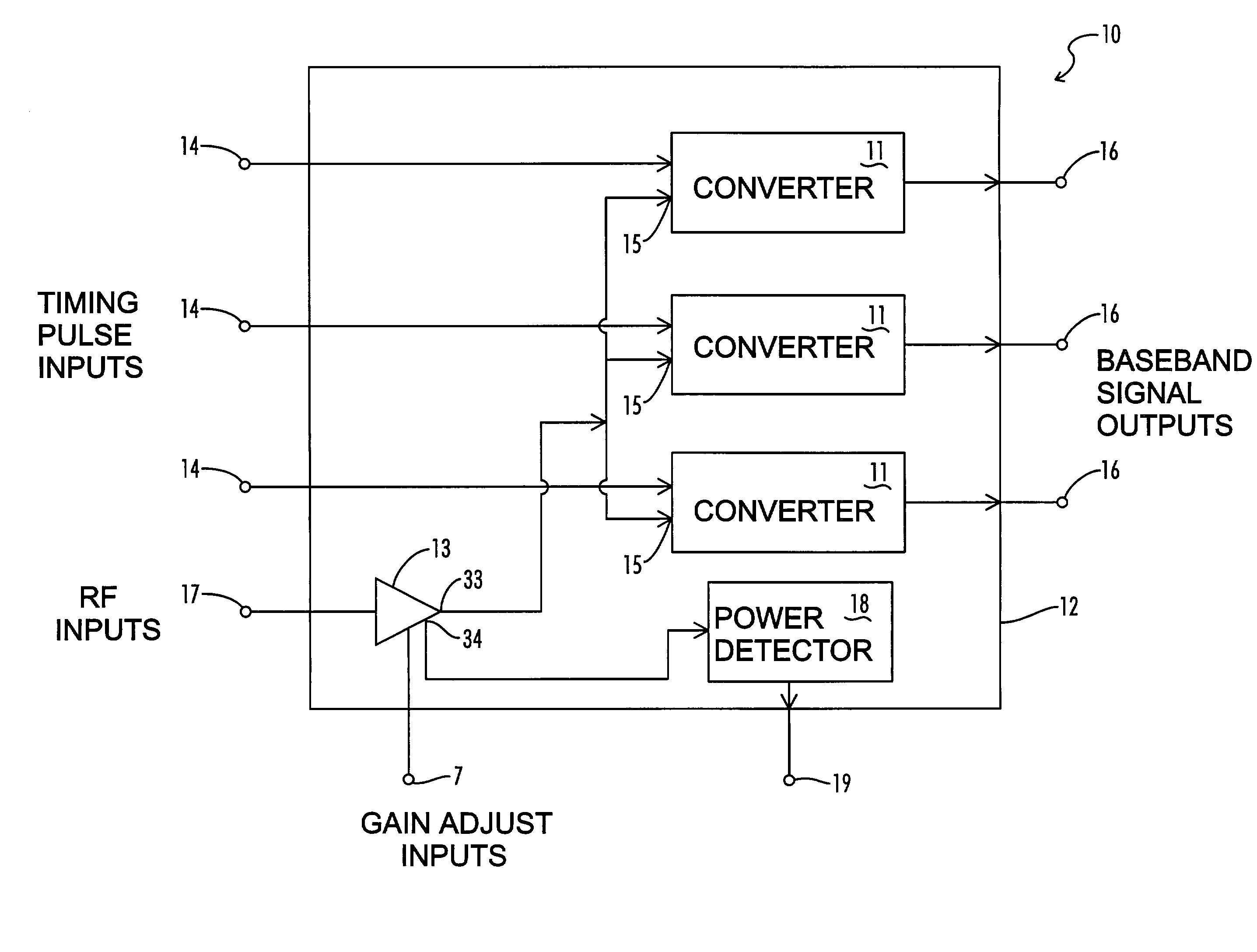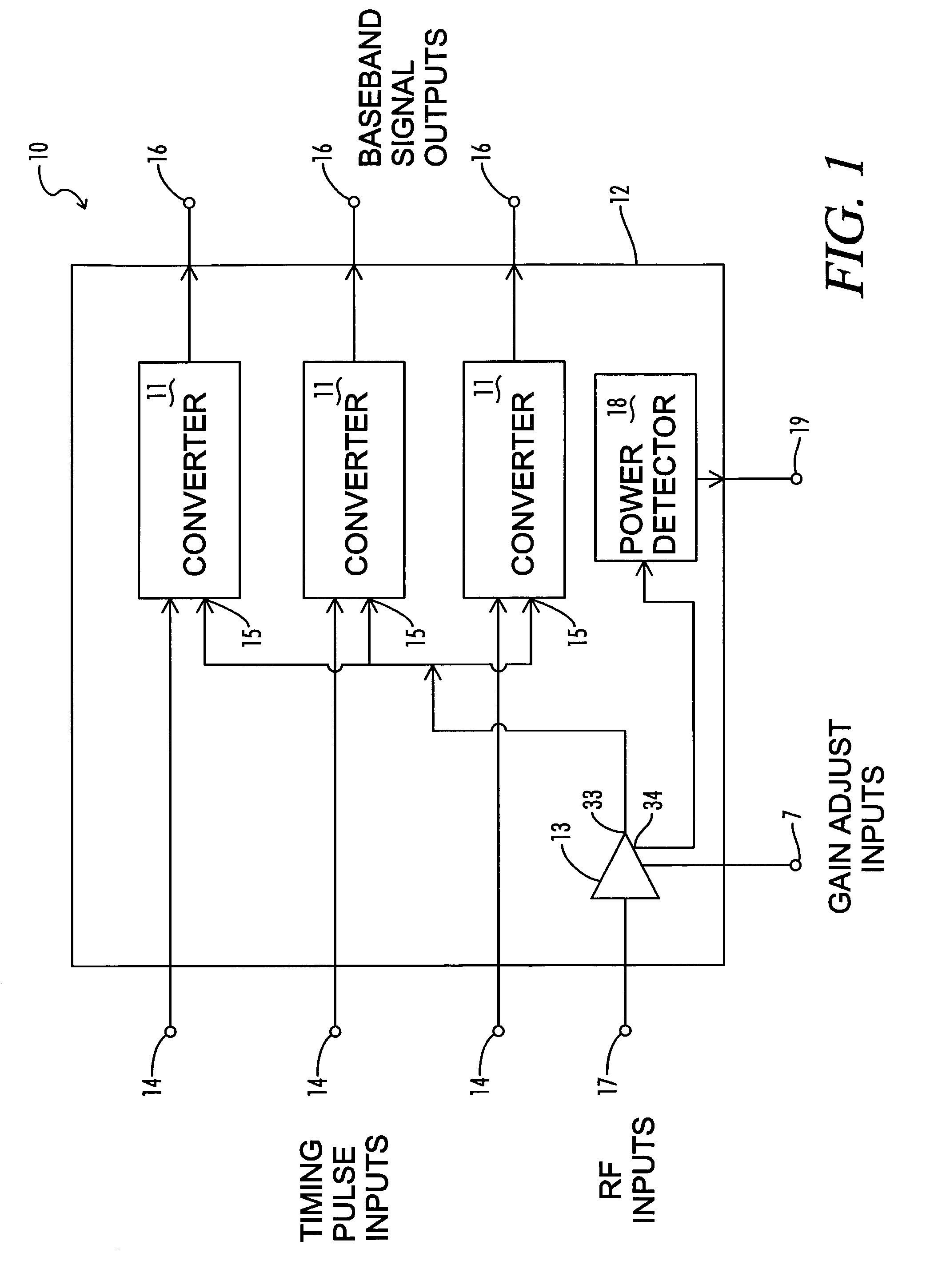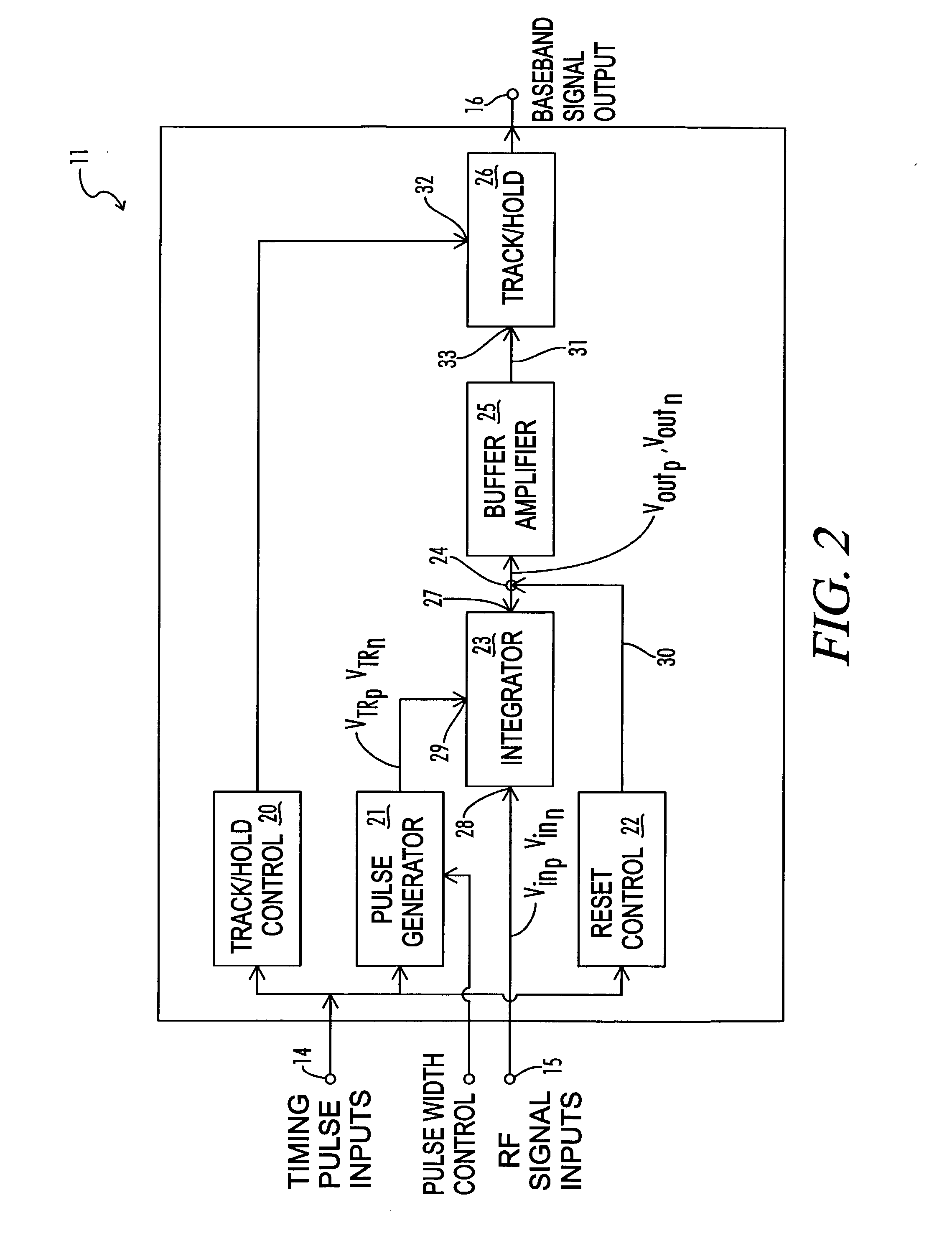Baseband signal converter for a wideband impulse radio receiver
a radio receiver and baseband signal technology, applied in the field of radio receivers, can solve the problems of low reliability, low average power, and low reliability of conventional narrow band am, fm, cdma, tdma and similar wireless communication methods and systems, and achieve the effects of improving reliability, reducing power consumption, and improving reliability
- Summary
- Abstract
- Description
- Claims
- Application Information
AI Technical Summary
Benefits of technology
Problems solved by technology
Method used
Image
Examples
Embodiment Construction
[0036] Baseband Converter Device Overview
[0037] A block diagram of one embodiment of the baseband converter device 10 of the present invention is shown in FIG. 1. Preferably, the converter device 10 is manufactured as an application specific integrated circuit (ASIC) in which the various device circuits are fabricated within a single integrated circuit device package 12. In the embodiment of FIG. 1, the device 10 includes three separate baseband converter circuits 11. Each converter circuit 11 has an RF signal input 15, a timing pulse input 14, and a baseband signal output 16. The RF signal inputs 15 for each converter circuit 11 are internally connected in parallel to the output 33 of a broadband, variable gain RF amplifier 13. The input of amplifier 13 is connected to device RF input 17 external to the device package 12 so that the device RF input 17 can be electrically coupled to an antenna 56 as part of an impulse radio receiver 100 (FIG. 7). Similarly, each timing pulse input 1...
PUM
 Login to View More
Login to View More Abstract
Description
Claims
Application Information
 Login to View More
Login to View More - R&D
- Intellectual Property
- Life Sciences
- Materials
- Tech Scout
- Unparalleled Data Quality
- Higher Quality Content
- 60% Fewer Hallucinations
Browse by: Latest US Patents, China's latest patents, Technical Efficacy Thesaurus, Application Domain, Technology Topic, Popular Technical Reports.
© 2025 PatSnap. All rights reserved.Legal|Privacy policy|Modern Slavery Act Transparency Statement|Sitemap|About US| Contact US: help@patsnap.com



